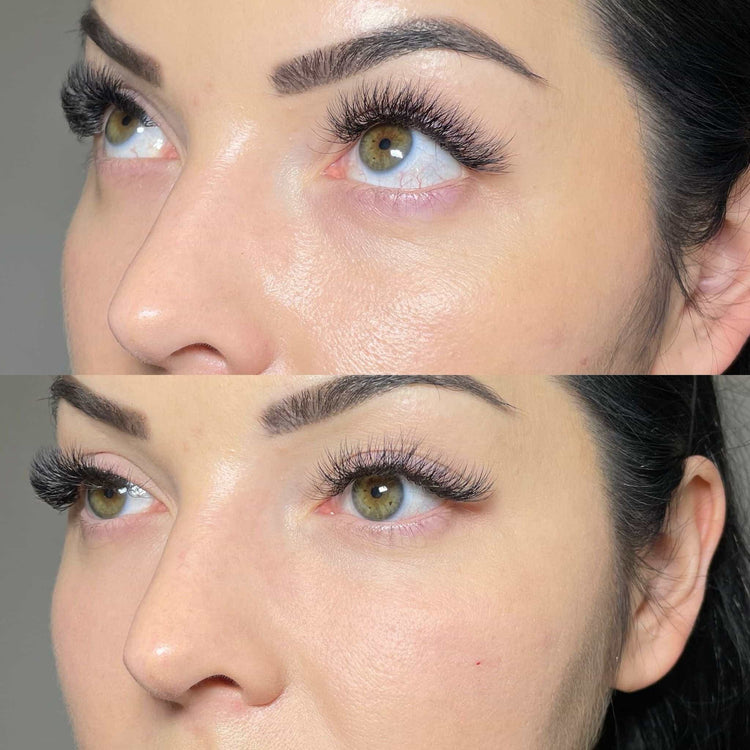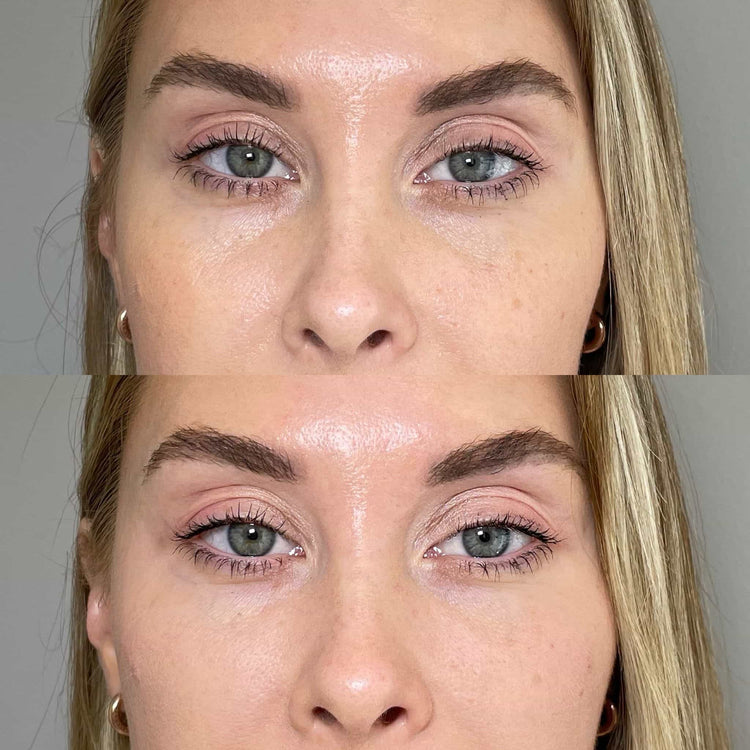Managing Pain During Tear Trough Filler Injections
Tear trough filler injections are a popular non-surgical procedure for addressing dark circles under the eyes. While generally considered safe, many patients experience some discomfort during and after the treatment. Understanding how to manage pain effectively can significantly improve your overall experience.
Topical Anesthetic
Topical anesthetic is often used before tear trough filler injections to minimize discomfort. This numbing cream is applied to the treatment area for 15-30 minutes prior to the procedure, reducing sensitivity during injection. Patients may also experience some temporary pain or soreness immediately after the injections, which can be managed with over-the-counter pain relievers such as ibuprofen or acetaminophen.
Numbness Cream Application
Topical anesthetic creams are commonly used before tear trough filler injections to minimize discomfort. These creams contain local anesthetics that numb the skin and reduce sensitivity during the procedure.
The cream is typically applied to the under-eye area 15-30 minutes before the injections begin, allowing sufficient time for it to take effect. While topical anesthetic can significantly reduce pain during the injections, some patients may still experience mild discomfort.
Ice Packs
Ice packs are a valuable tool for managing pain and swelling after tear trough filler injections.
- Apply an ice pack wrapped in a thin towel to the treated area for 10-15 minutes at a time, several times a day. This helps constrict blood vessels, reducing inflammation and minimizing discomfort.
- Start using ice packs as soon as possible after the injections and continue for a few days until swelling subsides.
Managing Pain After Tear Trough Filler Injections
Managing pain after tear trough filler injections is essential for a comfortable recovery. Topical anesthetic creams are commonly used to minimize discomfort during the procedure, numbing the skin and reducing sensitivity. While topical anesthetic significantly reduces pain during the injections, some patients may still experience mild discomfort afterward.
Over-the-Counter Pain Relievers
Over-the-counter pain relievers can effectively manage any remaining discomfort after tear trough filler injections.
- Ibuprofen, a nonsteroidal anti-inflammatory drug (NSAID), can help reduce both pain and inflammation.
- Acetaminophen, also known as paracetamol, primarily targets pain relief.
It’s important to follow the recommended dosage instructions on the packaging of these over-the-counter medications. If you experience any severe or persistent pain, consult with your doctor or the injector who performed the procedure for further guidance.
Cold Compresses
Topical anesthetic is often used before tear trough filler injections to minimize discomfort. This numbing cream is applied to the treatment area for 15-30 minutes prior to the procedure, reducing sensitivity during injection. Patients may also experience some temporary pain or soreness immediately after the injections, which can be managed with over-the-counter pain relievers such as ibuprofen or acetaminophen.
Ice packs are a valuable tool for managing pain and swelling after tear trough filler injections.
- Apply an ice pack wrapped in a thin towel to the treated area for 10-15 minutes at a time, several times a day. This helps constrict blood vessels, reducing inflammation and minimizing discomfort.
- Start using ice packs as soon as possible after the injections and continue for a few days until swelling subsides.
Over-the-counter pain relievers can effectively manage any remaining discomfort after tear trough filler injections.
- Ibuprofen, a nonsteroidal anti-inflammatory drug (NSAID), can help reduce both pain and inflammation.
- Acetaminophen, also known as paracetamol, primarily targets pain relief.
It’s important to follow the recommended dosage instructions on the packaging of these over-the-counter medications. If you experience any severe or persistent pain, consult with your doctor or the injector who performed the procedure for further guidance.

Gentle Massage
Managing pain after tear trough filler injections is essential for a comfortable recovery.
Topical anesthetic creams are commonly used to minimize discomfort during the procedure, numbing the skin and reducing sensitivity.
While topical anesthetic significantly reduces pain during the injections, some patients may still experience mild discomfort afterward.
- Apply an ice pack wrapped in a thin towel to the treated area for 10-15 minutes at a time, several times a day.
- This helps constrict blood vessels, reducing inflammation and minimizing discomfort.
- Start using ice packs as soon as possible after the injections and continue for a few days until swelling subsides.
Over-the-counter pain relievers can effectively manage any remaining discomfort after tear trough filler injections.
- Ibuprofen, a nonsteroidal anti-inflammatory drug (NSAID), can help reduce both pain and inflammation.
- Acetaminophen, also known as paracetamol, primarily targets pain relief.
It’s important to follow the recommended dosage instructions on the packaging of these over-the-counter medications. If you experience any severe or persistent pain, consult with your doctor or the injector who performed the procedure for further guidance.
Preventing Post-Injection Swelling and Bruising
Preventing post-injection swelling and bruising is crucial for a smoother recovery after tear trough filler injections. Minimizing these common side effects can significantly enhance your overall experience.

Arnica Gel
Arnica gel is often recommended to help reduce bruising and swelling following cosmetic procedures, including tear trough injections.
Arnica is a plant-based remedy that has been traditionally used for its anti-inflammatory properties. While research on its effectiveness is ongoing, many people find it helpful in minimizing post-injection discoloration.
To use arnica gel effectively after your tear trough injections, apply a thin layer to the treated area several times a day as directed by your injector or dermatologist.
Elevation
Preventing post-injection swelling and bruising is crucial for a smoother recovery after tear trough filler injections. Minimizing these common side effects can significantly enhance your overall experience.
- Avoid strenuous activity and intense exercise immediately following the injections, as this can increase blood flow to the area and exacerbate swelling.
- Refrain from touching or rubbing the treated area excessively, as this can also irritate the skin and promote bruising.
- Maintain a healthy lifestyle by eating a balanced diet, getting enough sleep, and staying hydrated. These factors contribute to overall well-being and can aid in tissue healing.
Arnica gel is often recommended to help reduce bruising and swelling following cosmetic procedures, including tear trough injections.
Arnica is a plant-based remedy that has been traditionally used for its anti-inflammatory properties. While research on its effectiveness is ongoing, many people find it helpful in minimizing post-injection discoloration.
To use arnica gel effectively after your tear trough injections, apply a thin layer to the treated area several times a day as directed by your injector or dermatologist.
Avoid Strenuous Activity
Preventing post-injection swelling and bruising is crucial for a smoother recovery after tear trough filler injections. Minimizing these common side effects can significantly enhance your overall experience.
- Avoid strenuous activity and intense exercise immediately following the injections, as this can increase blood flow to the area and exacerbate swelling.
- Refrain from touching or rubbing the treated area excessively, as this can also irritate the skin and promote bruising.
- Maintain a healthy lifestyle by eating a balanced diet, getting enough sleep, and staying hydrated. These factors contribute to overall well-being and can aid in tissue healing.
Important Considerations
Managing pain after tear trough filler injections is essential for a comfortable recovery.
Communicate with Your Injector
Open communication with your injector before, during, and after the procedure is crucial for ensuring a comfortable experience and managing any potential discomfort.
Discuss your concerns and expectations regarding pain levels beforehand. Let them know if you have any previous experiences with injections or sensitivities to certain medications.
Don’t hesitate to communicate during the procedure if you are experiencing any significant pain or discomfort. Your injector can adjust their technique or offer additional numbing measures as needed.
After the injections, keep your injector informed about any ongoing pain or unusual symptoms.
Realistic Expectations
It’s essential to have realistic expectations about pain management during and after tear trough filler injections. While topical anesthetic and over-the-counter pain relievers can effectively minimize discomfort, some level of soreness is normal.
Understand that individual experiences vary, and factors like your pain tolerance, sensitivity to needles, and the amount of filler used can influence your pain levels.
Remember that any discomfort is usually temporary and subsides within a few days.
Aftercare Instructions
Managing pain after tear trough filler injections is essential for a comfortable recovery. Topical anesthetic creams are commonly used to minimize discomfort during the procedure, numbing the skin and reducing sensitivity. While topical anesthetic significantly reduces pain during the injections, some patients may still experience mild discomfort afterward.
Ice packs are a valuable tool for managing pain and swelling after tear trough filler injections. Apply an ice pack wrapped in a thin towel to the treated area for 10-15 minutes at a time, several times a day. This helps constrict blood vessels, reducing inflammation and minimizing discomfort. Start using ice packs as soon as possible after the injections and continue for a few days until swelling subsides.
Over-the-counter pain relievers can effectively manage any remaining discomfort after tear trough filler injections. Ibuprofen, a nonsteroidal anti-inflammatory drug (NSAID), can help reduce both pain and inflammation. Acetaminophen, also known as paracetamol, primarily targets pain relief. It’s important to follow the recommended dosage instructions on the packaging of these over-the-counter medications. If you experience any severe or persistent pain, consult with your doctor or the injector who performed the procedure for further guidance.
Preventing post-injection swelling and bruising is crucial for a smoother recovery after tear trough filler injections. Minimizing these common side effects can significantly enhance your overall experience. Avoid strenuous activity and intense exercise immediately following the injections, as this can increase blood flow to the area and exacerbate swelling. Refrain from touching or rubbing the treated area excessively, as this can also irritate the skin and promote bruising. Maintain a healthy lifestyle by eating a balanced diet, getting enough sleep, and staying hydrated. These factors contribute to overall well-being and can aid in tissue healing.
Arnica gel is often recommended to help reduce bruising and swelling following cosmetic procedures, including tear trough injections. Arnica is a plant-based remedy that has been traditionally used for its anti-inflammatory properties. While research on its effectiveness is ongoing, many people find it helpful in minimizing post-injection discoloration. To use arnica gel effectively after your tear trough injections, apply a thin layer to the treated area several times a day as directed by your injector or dermatologist.
Open communication with your injector before, during, and after the procedure is crucial for ensuring a comfortable experience and managing any potential discomfort. Discuss your concerns and expectations regarding pain levels beforehand. Let them know if you have any previous experiences with injections or sensitivities to certain medications. Don’t hesitate to communicate during the procedure if you are experiencing any significant pain or discomfort. Your injector can adjust their technique or offer additional numbing measures as needed. After the injections, keep your injector informed about any ongoing pain or unusual symptoms.
It’s essential to have realistic expectations about pain management during and after tear trough filler injections. While topical anesthetic and over-the-counter pain relievers can effectively minimize discomfort, some level of soreness is normal. Understand that individual experiences vary, and factors like your pain tolerance, sensitivity to needles, and the amount of filler used can influence your pain levels. Remember that any discomfort is usually temporary and subsides within a few days.
Get professional Under Eye Filler treatments at It’s Me & You Clinic with Dr. Laura Geige
- Why Can’t You Drink Alcohol After Lip Filler - November 7, 2025
- What Is The Best Age To Get Under Eye Fillers? - November 5, 2025
- What Are CBD Gummy Edibles And How Do They Work - November 4, 2025
